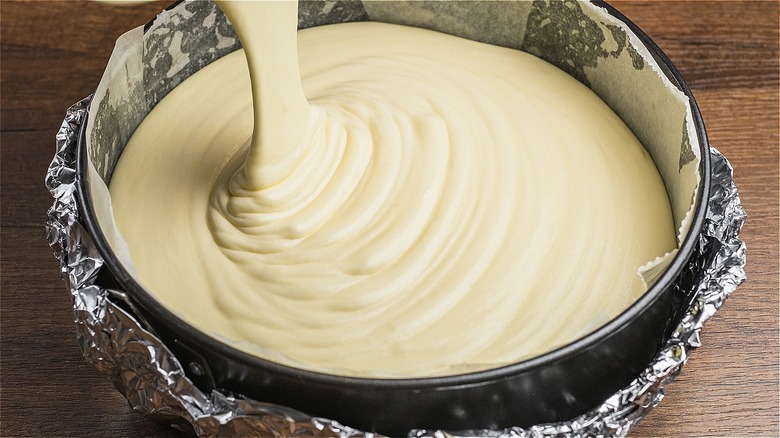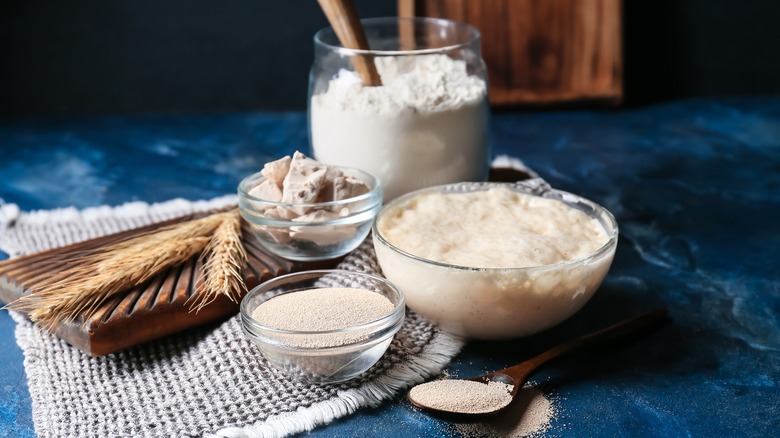Why You Shouldn't Let Cake Batter Sit
When it comes to baking, many recipes benefit from letting the batter or dough sit. For instance, we all know that you're supposed to let your dough rise when baking bread – though the length of time you should let the dough rise varies from recipe to recipe. The same goes for certain cookies (such as this chewy molasses spice cookie recipe), and even for light and fluffy pancakes, per The Little Pancake Company.
However, not every dough or batter should be allowed to rest between preparation and baking. In fact, resting certain batters, like cake batter, can actually be detrimental to both the quality and the texture of the final product. Now, you might be wondering how letting cake batter sit could be a bad thing, and if you are, you've come to the right place. But first, let's take a step back and look at the science of leavening agents, like yeast and baking powder.
Your cake recipe includes leavening agents for a reason
Leavening agents cause dough or batter to expand and rise. Regardless of the leavening agent you use, these particular ingredients create little bubbles of gas or air, according to Kitchen Aid. In turn, these bubbles give baked goods their light texture. However, as noted by Nigella, leavening effects are short-lived in the case of cake batter, seemingly due to the particular ingredients used. Therefore, if you were to let cake batter sit out for an extended period of time, all those little bubbles created by your baking powder or soda will pop.
While this is a fairly common mistake made while baking a cake, it can provide some unpleasant results nevertheless. Similarly to using expired leaveners, letting your batter sit for too long before cooking will result in a heavy and dense cake. Fortunately, the solution is simple — be sure to preheat your oven as you mix up your batter, and pop the cake in to cook as soon as possible.

